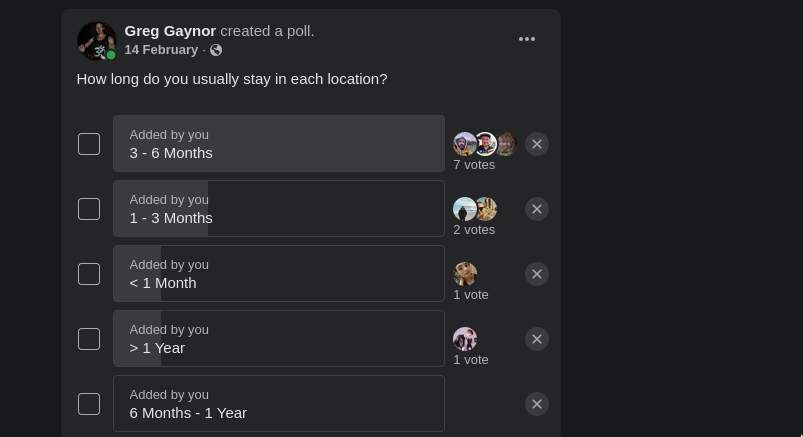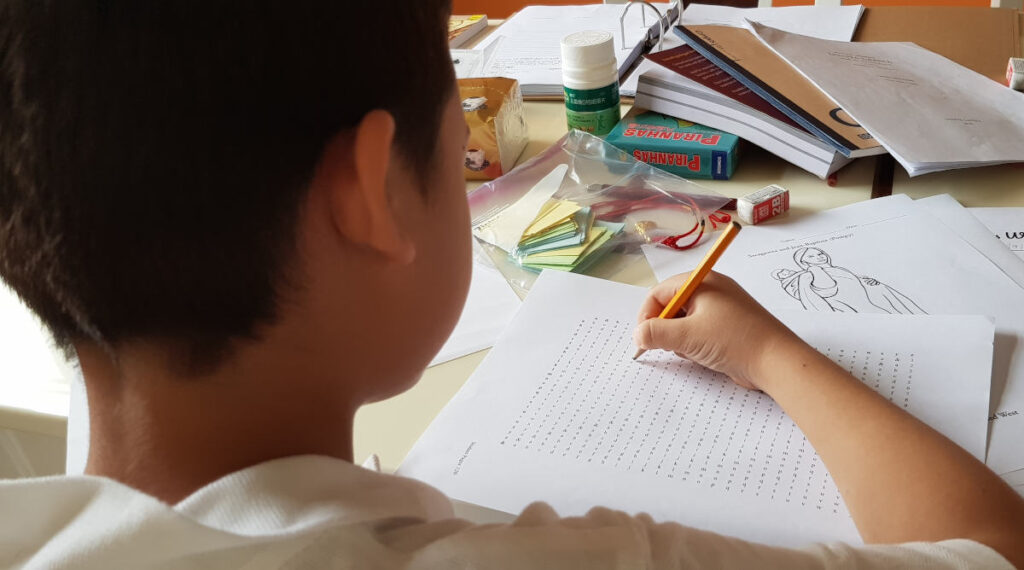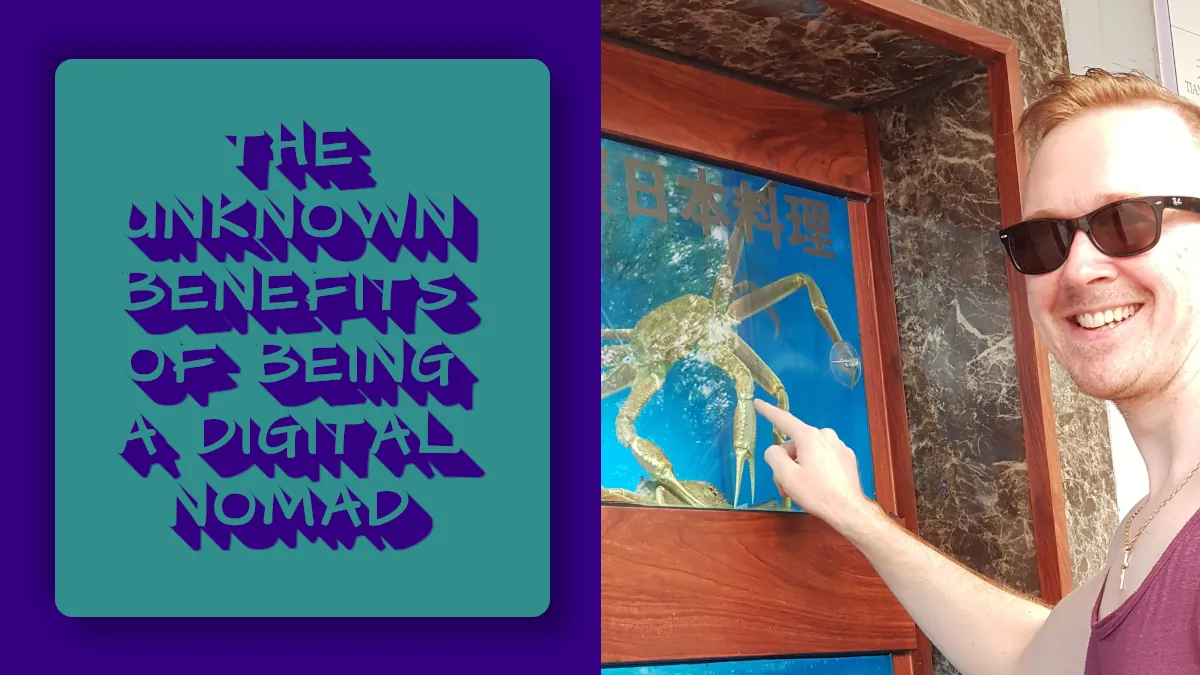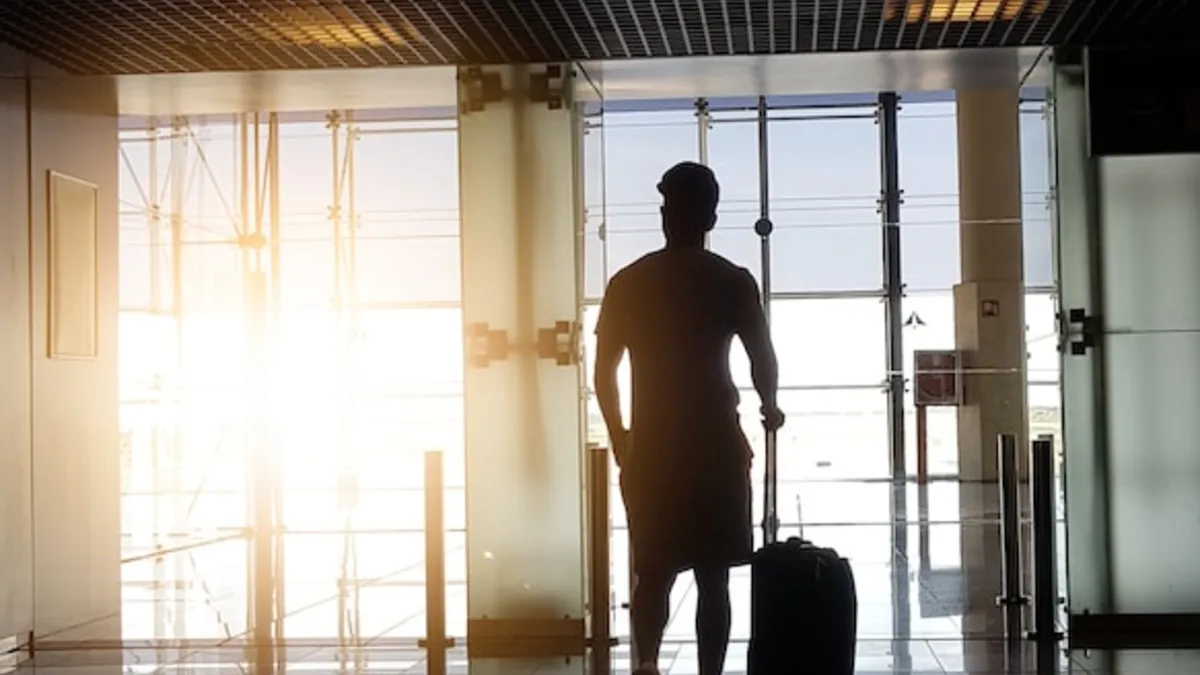If you’re thinking of setting off with your family on a lifestyle of travel, freedom and new experiences, this is the guide you need to see. For all the things I love about living the nomadic life with my family, there are just as many that I wish I’d known about before becoming a digital nomad family. This guide will show you not only how to survive but how to thrive being a digital nomad family.
Bookmark this page so you can come back to it later!
Table of Contents
- How Much Money Will Our Digital Nomad Family Need?
- Nomadic Family Lifestyle Income Streams
- Working & Productivity as a DN with a family (Do You Need A Nanny?)
- Digital Nomad Destinations For Families
- Legal Issues & Requirements Of The Digital Nomad Lifestyle
- The Biggest Challenge Of The Digital Nomad Life: The Language Barrier
- Learning A Language Together While You Travel The World
- Experiencing Different Cultures With Your Nomad Family
- The Family & Friends We Leave Back Home
- What To Do With Your Family Home?
- Health & Travel Insurance
- Traveling with Young Kids
- Schooling While Traveling The World
- Can You Travel With Your Pets?
- Digital Nomads Get A Once In A Lifetime Experience With Their Families
How Much Money Will Our Digital Nomad Family Need?
It’s one of the first thing that comes to mind, can our family afford to travel the world full time? Here I have listed the expenses of an average family of four in various common digital nomad destinations.
As you can see, there is quite a range. Depending on where you visit and your spending habits, your family may even be able to spend less than these averages.
Remember that these numbers don’t include accommodation because it can vary so much even in the same city. A different area or a larger place (if you have a big family) can make a huge difference to the price.
| Destination | Cost of Living/month |
|---|---|
| Chiang Mai | $1,764 |
| Naples | $2,668 |
| Bali | $1,900 |
| Medellin | $1,545 |
| London | $3,896 |
| Mexico City | $1,885 |
Nomadic Family Lifestyle Income Streams
Before you pack up your partner and kids, say goodbye to the neighbors and put the car up for sale, you need to know how you’re going to support yourselves while traveling.
- Remote Workers
You work for a company but can do your work at any location - Employed on location
You move around and find employment at each destination, e.g. English Teacher - Self Employed/Business Owner
You work for yourself and can do your work anywhere.
If you are employed either as a remote worker or employed on location, income isn’t going to be a huge problem for you. For digital nomad freelancers or the self employed becoming a digital nomad as you start a new income stream can be a lot of work.
There are a lot of ways to make money as a digital nomad and I list 11 passive income ideas in that post. For the most part however, building a passive income stream will take some time so start as early as possible.
Working & Productivity as a DN with a family (Do You Need A Nanny?)

Working whenever you want and where ever you want may sound like the dream to anyone trapped in a cubicle job but it brings with it it’s own set of challenges. Digital nomad families have to juggle work and kids all while being in an unfamiliar place without a set routine or place of work.
While finding wifi is rarely ever a problem now, working out of cafes, hotel lobbies or other unfamiliar surroundings can still throw you for a loop when you’re trying to be productive. It might be a loud group who’ve set up on the table next to you or just the feeling that you’ve been sat too long without buying anything, these small distractions can ruin a work session.
Check out these places to work from.
If you ditch the idea of working in public, and decide instead to do your work where you’re staying, you’ll have the family competing for your attention. Anyone who has ever worked from home on a weekend or school holiday will know the feeling. You just want to finish this piece of work, but the constant interruptions make it an uphill battle.
“Where’s my sword?”
“Can I have coco pops for lunch?”
“When will you be done?”
Maybe hiring a nanny isn’t a bad idea?
Setting Boundaries
Conditions aren’t always going to be optimal for productivity. You’re unlikely to ever have the support of an ergonomically deigned office chair in a temperature controlled office. You’re more likely to be fighting off mosquitoes, turning up the volume in your headphones to block out the noise from outside.
Setting boundaries will set you up for success. Here are my tips for separating your work from everything else you have going on.
- Recognize you can’t do as much work now in the digital nomad world
- Set a daily working period
- Go out to work
- Occupy your kids before you start
- Work in shifts
- Keep A Running List
- Create A Daily List Everyday
Digital Nomad Destinations For Families

This is the fun part!
Where do you want to go? What do you want to see? You more than likely have a list memorized of the first 20 places you want to go, I know I did (and still do!)
Here are a few of the family friendly locations that I recommend
- Phuket, Thailand
- Luang Praban, Laos
- Yun Nan, China
- Chiang Mai, Thailand
- Barcelona, Spain
- Florence, Italy
List of Countries With Digital Nomad Visas
- Nomadgirl has great resource on which countries currently have Digital Nomad Visas.
How Often Do Digital Nomad Families Travel?
How often you decide to travel from place to place with your family will dictate your digital nomad experience more than anything else. At first, traveling to a new country every month can be amazing! But a year on the road like that will start to become exhausting, not just for you but for your kids too.
When you first transition into a digital nomad lifestyle, the idea of traveling and vacation are still tightly connected in your mind. On vacation we typically have a limited amount of time to travel, to see the sights and to make the most of it before going back to your normal life.
Slowly you will become accustomed and undestand that this is your normal life. When you do the need to ‘make the most of it’ will subside and you’ll all relax into your new nomadic lifestyle.
A quarterly migration is much more manageable
I polled a Digital Nomad Facebook group to find out how long most people spend in one location and, overwhelmingly the response was 3-6 months. Here are the results of the poll

As someone who has been nomadic for 15 years, here are the reasons, as I see them, why 3-6 months is optimal for most people.
- Visa Durations
- It’s Long Enough To Experience – Doesn’t Feel Like a Holiday
- Cost Of Travel – Taking flights isn’t cheap
- Less Stressful
Slomadding
It’s hard to say what percentage of more experienced digital nomads become slomads.
Unfamiliar with the term slomad or slowmad? It means exactly what you think it does, a slow nomad. Someone who moves from destination to destination on a longer timescale, spending more time in each location resulting in a slower pace.
If you want to learn more about the slowmad lifestyle or why you should be a slowmad, check out this article.
Legal Issues & Requirements Of The Digital Nomad Lifestyle

One of the things I dislike most about the living as a digital nomad family is dealing with the bureaucracy. Every country of the world has it’s own kind. Official documents, passports, visas, driving licenses and birth certificates, it feels like it never ends.
Digital Nomad Tips For Bureaucracy
- Renew everyone’s passport at the same time
Even if there is still time left on some of them. You’ll be glad you did! Making separate trips to the embassy for each member of the family to apply and later pick up passports is a hassle you don’t need when you’re abroad.
- Get plenty of passport sized photos before you embark on your journey!
I don’t know how many times I’ve been in a government office of one country or another being told that I need to supply them with multiple passport sized photos. I don’t know what they’re doing with all these photos of me, there must be hundred of them floating around by now! The places you need to hand them in almost never have a photo booth themselves either!
- Keep a list of the expiry dates of important documents
Or put them in your calendar with a reminder set in advance so you can renew them. I remember once trying to hire a car back home when the man behind the desk told me “your license is expired” as he handed it back to me. I hadn’t been in the country for a number of years and it just never occurred to me. Thankfully, he did help me get a taxi.
The Biggest Challenge Of The Digital Nomad Life: The Language Barrier
The first problem most of us come up against when we start traveling is the language barrier. It’s not just that you can’t get directions to the museum as most text books would have you believe. In fact, the language barrier adds a layer of complexity on top of almost everything your family does.
The techy ones among you may think that all you need is google translate and that might be true if you’re just trying to order a drink or tell a taxi driver where to take you. But life is more complicated than that. These are the three levels of miscommunication you will run into.
- Don’t Understand
Going back to the example of buying drinks, imagine you and your family are near the beach, far enough to not have sand everywhere but close enough that all you can do is look off towards the ocean. Sitting around a wooden bar that’s just a little too tall for your youngest, you order drinks. All you want is watermelon juice but the surfer dude behind the bar doesn’t understand and you don’t know the word for watermelon.
- Misunderstand
In a alternative universe, he understands watermelon, or seems to but he brings your family coconut juice. Those big round hand gestures didn’t help.
- You think you understand
You go back a third time and this time he clearly understands the word watermelon, he even goes over and grabs one to be sure. “Yes! Perfect!” But a few minutes later when the juice comes, your kids start spitting it out, it’s salty! You complain to the bar tender but he says that’s just the way we drink it here.
In the first instance google will be all you need, you can find a picture of a watermelon or use google translate to find a particuluar word. But the second and third language problems are not so easily solved. They require a change of expectation.
Back home, we are spoilt beyond measure, the consumer culture of the west has meant that, as consumers, we almost always get what we want. But this isn’t true elsewhere. We need to expect less.
When we learn to go with the flow, to be happy with getting something even if it’s not what we wanted, life will become much easier.
In a situation where we are unable to speak the local language, the responsibility is on us to get our point accross accurately, not on the person were talking to. Someones lack of English ability is really a lack of our foreign language ability. We need to rememeber
- Miscommunications are our fault
- Miscommunications will happen
Learning A Language Together While You Travel The World
Learning a language doesn’t have to mean cracking out the textbooks! It can just mean learning a few words on a language learning app or finding a native speaker to learn conversation. You don’t have to aim for fluency and at the beginning, you shouldn’t. That’s a goal that will take years.
But if you’re staying somewhere for a while or, if you intend to travel back there again and again, learning the language of that part of the world can be really rewarding. Trying to decide whether to learn the language?
The part of you that remembers school Spanish or French probably thinks that you should be memorizing verb endings but you’ll get much further quicker if you just start talking (and listening.)
Here are some apps that will move your language learning journey along and hopefully your family will love too.
- Duolingo
A gamified language learning app - Memrise
As the name implies this app focuses on memorizing vocab and sentences - Lingq
Lingq immerses you in the language with graded reading material - iTalki
Find native speakers and teachers to have real live conversations or lessons - Mondly
Hear native speakers and chat with AI chatbots
Experiencing Different Cultures With Your Nomad Family

One of the reasons travelers and nomads with kids choose this lifestyle is to learn about other cultures of the world. In fact, it’s the answer I hear most from other digital nomads I meet.
Culture is a big idea, with many different aspects. You’re not going to be able to learn it all, choose one part and immerse yourself in it instead. Start with food! It’s the yummiest!
- History
- Religion
- Philosophy
- Mindset
- Lifestyle
- Food
- Dress
Different families address learning about different cultures differently.
Academically
These nomadic families are easy to spot, while you’re working away in the corner of some cafe, and your kids are playing some game with the waitress, these kids are reading a book on the history of Buddhism. Don’t get me wrong I’m not knocking the academic approach, just poking fun. I use the academic approach a lot with my son. There are real benefits to doing it this way.
- Fosters a solid understanding
- Core Ideas can be memorized
- Easily intergrated into a course of study
- The child can verbalize what he/she’s learned
Using the academic approach, the most simple way to implement this is by adding local culture study to the weekly timetable. It might mean writing an essay on Ankor Wat when you’re in Cambodia, learning to write Chinese characters when you’re in Taiwan or giving a presentation on Hinduism when you’re in India.
If you’re family homeschools, adding some culture study should be easy.
But you’re goal may not be for your children to be well versed in the cultural aspects of every country you go to. You might just want them have some hands on experience of an unfamiliar world culture.
Hands on
Instead of making local culture become a subject that your kids will start to dread, it could be a fun activity, far removed in their minds from the idea of homeschool.
- Exploring temples in Thailand and speaking to the monks in the gardens.
- Learning to make momos in Nepal or sushi in Japan
- Wearing Chinese dresses or Balinese jewellry
You don’t have to be an expert or ‘teach’ them anything, by experiencing the culture together you and your children can learn what makes the people there tick.
Awareness
For many parents, it’s just the idea that there are other cultures out there. Families creating memories of the beauty of other cultures find it’s the best way to impact their children. Being aware of the existence of different ways of thinking, of doing things and of living, breeds tolerance and respect.
You only need to point it out for your children to become aware of it.
The Family & Friends We Leave Back Home
While thinking about your nomadic adventure with all the places you’re going to see and all the experiences you can share with your family, it’s easy to forget that you’ll also be leaving some family behind.
It may be the children’s grandparents, the in-laws or your siblings, a new digital nomad life for you might mean loosing a part of everyday life for them.
I’m sure you also have freidsn that you see regulalry back home. Deciding to travel the world with your family means not seeing them as often as you did.
Rather than seeing it as loosing or leaving behind a relationship, its just a development in the relationship. You just need to build the habit of keeping in touch with everyone back home.
Of course there’s only so much you can do and say with a video call, and children can find it awkward if they haven’t seen the person for a long time. It’s best to make time to go see the ones you love. Or better still, invite them out to see you!
What To Do With Your Family Home?

Should you keep it? Rent it out? Turn it into an AirBnB? Or just sell and have one less thing to worry about?
Deciding what to do with your house (and all your stuff!) is a tough decision to make. I go into more detail in a post coming soon but here are 3 options.
If you’re the cautious type
- Don’t sell! Leave you’re house as it is with all you’re belongings exactly where they are. If things don’t work out or if long term travel isn’t for you, you can go back as if nothing ever happened.
If you’re the determined type
- Put your things into storage (or someone garage, thanks Dad!) and rent out your house. The extra income will help with expenses (or the mortgage.)
If you’re the daring type
- Sell your house and get rid of everything! This is the ‘burn the boats’ mentality, I don’t recommend it!
Health & Travel Insurance
Having travel insurance is of course a no brainer!
It’s not going to make a huge difference if you catch a cold or need to buy medications but in the event of an emergency when you (or your family, God forbid) need immediate medical care or to be airlifted home, it could be the difference between life and death.
There are so many options when it comes to travel insurance, I’m not going to go into details here. If that’s an article you’d like to see from me, let me know!
Traveling with Young Kids
- Vaccines
Make sure they’re up-to-date and you know what is scheduled next and when - Live off the land
Life will be much easier if you can learn to use what you can find. Disposable diapers, formula and baby clothes can be purchased almost anywhere, you don’t need to take them! - Schedule lots of easy days
Days at the beach with a toddler are easier than a day at The Forbidden Palace, plus the palace will always be there – that little one will be big soon! - Breastfeed if possible
No carrying around bottles, formula, sterilizer, nipples and constant washing, packing and warming.
Schooling While Traveling The World

I have a whole post covering schooling for digital nomad kids, suffice to say that if you are going to be changing location even semi regularly, some style of homeschooling is going to lend to a more stable and consistent educational environment for your children.
That being said, even if you do decide to go down the homeschooling route, it’s not a walk in the park. You need to decide how you’re going to arrange a homeschool course of study for each child. You need to gather all the curricula, resources and books (oh so many books!) And finally you need to schedule in the kids’ homeschooling around traveling, earning money, sightseeing and everything else you have going on as a digital nomad family.
Check out the post mentioned above for help with all of this, including how to find curricula you can print out where ever you are in the world for your kids.
The way we structure our homeschool time is really simple. Whether were on a beach in Thailand, a mall in China or sitting in a cafe on the side of a mountain in the Himalaya region, if it’s before lunch time, you’ll find my son with pencil in hand doing his work at whatever makeshift desk we have. He’s been working this way for 5 years and we find that the structure and consistency makes it really easy to manage and sustain. We know what to do and he knows what to expect. It a constant in our world of change.
Can You Travel With Your Pets?
Traveling with pets is definitely a challenge, but it is possible. This article by Chase Warrington describes the international travels of his dog Koda and some good tips for you if you are thinking of bringing your pet with you.
Digital Nomads Get A Once In A Lifetime Experience With Their Families
There is a lot to think about before becoming a digital nomad family but don’t let it put you off!
It’s a great life to be able to share with your family. There’s no better feeling than waking up in an unfamiliar country and exploring the beauty there with your family.
If you’re looking for a change in life, if you’re fed up with your job, if your family wants to see the world, think about becoming a digital nomad family for a completely new experience – you wont regret it!









1 thought on “The Digital Nomad Family: You’ll Wish You’d Known This Before Traveling The World”
Comments are closed.